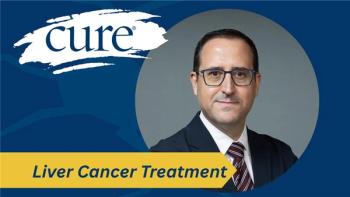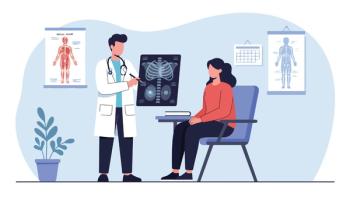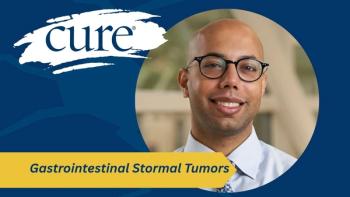
Top 4 Stories From the 2024 ASH Annual Meeting
Key Takeaways
- CAR-T cell therapy in pediatric B-ALL achieved high remission rates and long-term cancer-free outcomes, with milder CRS linked to better results.
- Tecvayli, as maintenance therapy in multiple myeloma, showed 100% MRD-negativity and deepened responses, with high complete remission rates across cohorts.
CURE® highlights some top stories from the ASH Annual Meeting, focusing on B-cell acute lymphoblastic leukemia, multiple myeloma and other blood cancers.
Trial findings presented at this month’s 2024 ASH Annual Meeting highlighted several advances in the treatment of blood cancers, including leukemia and multiple myeloma.
CURE® selected some of the top stories from our coverage of the hematology conference.
CAR-T Cell Therapy Shows EFS Benefit in Pediatric Leukemia Subset
A phase 2 study explored a novel bicistronic CD19/CD22-directed CAR-T cell therapy for children with B-cell
Most children in the study achieved remission, meaning their cancer disappeared after treatment. Importantly, many children remained cancer-free for one year, demonstrating the long-term effectiveness of this therapy.
The study also looked at the impact of combining CAR-T cell therapy with a bone marrow transplant. Children who underwent this combined approach showed slightly better long-term outcomes compared to those who received only CAR-T cell therapy.
In addition, most children experienced side effects known as cytokine release syndrome (CRS). However, those with milder forms of CRS generally had better long-term outcomes. Interestingly, the severity of CRS was closely linked to the extent of the child's cancer, rather than the amount of CAR T-cells administered.
Tecvayli Effective Maintenance Therapy in Newly Diagnosed Multiple Myeloma
Findings from the phase 3
This safety run-in included of two groups treated with Tecvayli-Revlimid (cohorts 1 and 2) and one administering Tecvayli monotherapy (cohort 3). Of note, the Tecvayli dose was less intense in cohort 2 compared with cohort 1.
The minimal residual disease (MRD)-negativity rate (10-5 sensitivity) was 100% among evaluable patients in all three cohorts. This was measured at 12 months in cohort 1 and at six months in cohorts 2 and 3. In addition, median progression-free survival (PFS) had not been reached in any of the cohorts, meaning that at least half of the patients in the study did not achieve this endpoint when assessed by researchers.
It was also reported that responses to treatment deepened during maintenance in all three cohorts. All patients in cohort 1 achieved a complete remission (CR) or better, as did 90.6% of patients in cohort 2 and 93.3% of patients in cohort 3. In cohort 1, the CR rate was 9.4% and the stringent CR (sCR) rate was 90.6%. In cohort 2, 9.4% of patients achieved a very good partial response (VGPR), 25% of patients achieved a CR, and 65.6% of patients achieved an sCR. The corresponding rates were 6.7%, 23.3% and 70%, respectively, in cohort 3.
Heart Risk May Occur Less With Some BTK Inhibitors in B-Cell Blood Cancers
Cardiovascular-related side effects may occur less often in patients with some B-cell blood cancers treated with a second-generation
Findings from the retrospective study showed that atrial fibrillation was observed in 15.65% of patients treated with a first-generation BTK inhibitor (19,746 patients) versus 5.63% of patients treated with second-generation BTK inhibitors (2,501 patients).
Additional cardiac side effect data showed that 14.78% of patients in the first-generation group experienced general cardiac side effects versus 12.64% of patients in the second-generation group. The rates of coronary artery disease were 4.91% and 4.49%, respectively, and the rates of other arrhythmias were 8.91% versus 12.97%, respectively.
Bleeding events were reported in 23.42% of patients in the first-generation group versus 18.9% of patients in the second-generation group. The rates of heart failure were 4.83% and 2.54%, respectively. Additionally, 1.23% of patients in the first-generation group experienced cerebrovascular events versus 1.13% of patients in the second-generation group. Ventricular tachycardia was reported in 0.96% of patients in the first-generation group versus 1.1% of patients in the second-generation group.
Calquence Plus Venclexta Combo May Improve Survival in Frontline CLL
According to the
Patients receiving Calquence plus Venclexta (AV) or Calquence plus Venclexta and Gazyva (AVO) showed no signs of disease progression for a median follow-up of 40.8 months. In contrast, the median PFS for patients treated with standard-of-care chemoimmunotherapy (FCR or BR) was 47.6 months. Compared to standard-of-care, the doublet regimen (AV) reduced the risk of disease progression or death by 35%, while the triplet regimen (AVO) reduced this risk by 58%. At 36 months, the estimated PFS rates were 83.1% for AV and 76.5% for AVO, significantly higher than the 66.5% observed with standard-of-care chemoimmunotherapy.
For more news on cancer updates, research and education, don’t forget to





